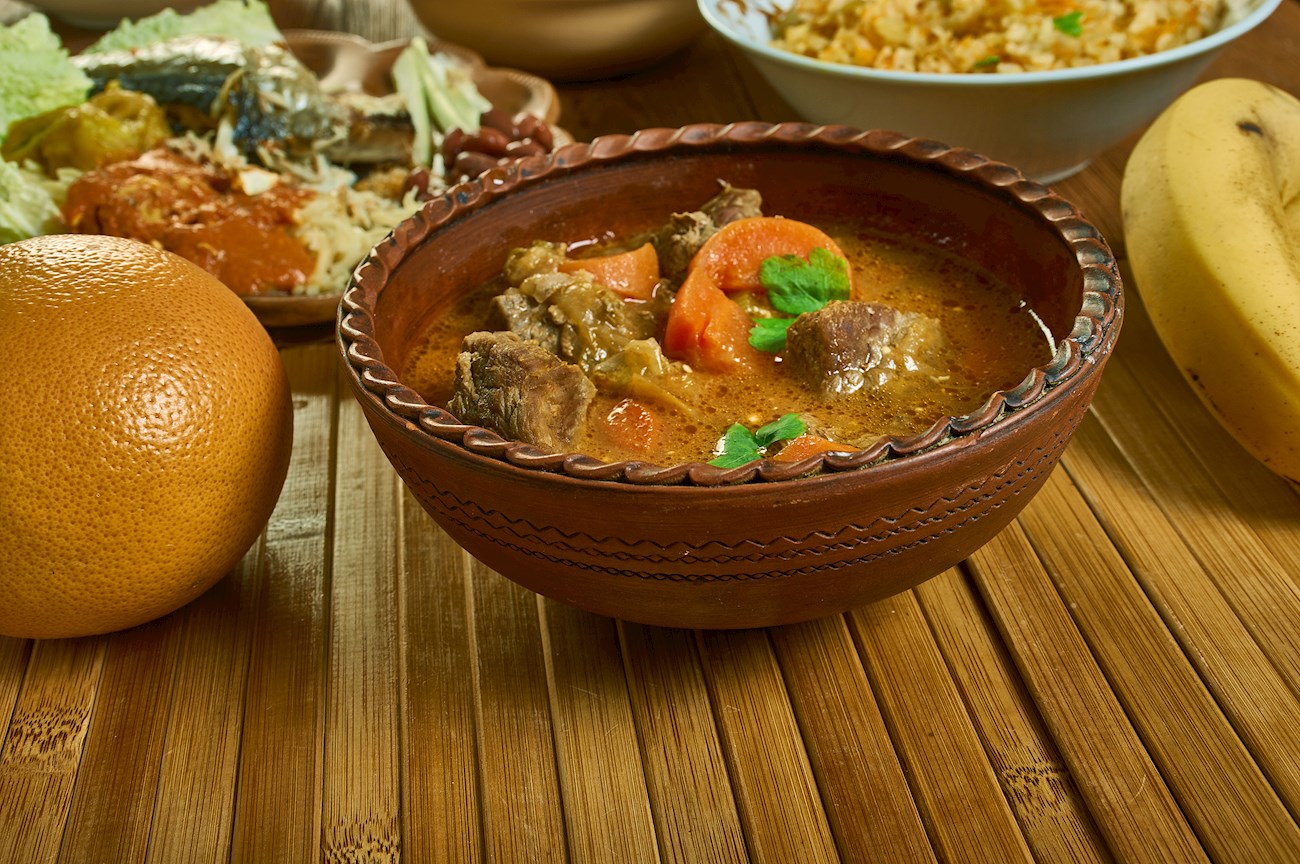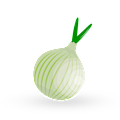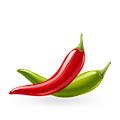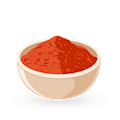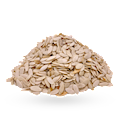MAIN INGREDIENTS
Egusi is a flavorful soup or sauce that is popular throughout West and Central Africa (most noteably Nigeria and Central African Republic) consisting of onions, tomatoes, hot chili peppers, and oil. It is traditionally thickened with flour that is made from seeds of gourds, pumpkins, melons, and squashes.
The egusi is typically seasoned with salt, black pepper, and cayenne pepper. When the soup or sauce develops a smooth consistency, it is then usually served with boiled vegetables, rice, or a variety of grilled fish and meat dishes.
Palm nut soup is a West African soup made with either palm fruit or palm pulp and meat, fish, crayfish, vegetables, and seasonings, but ingredients vary depending on the country or region. The soup can be found in Ghana, Cameroon, Nigeria, and Ivory Coast, and each country has a different name for it.
Some of the side dishes that are served with palm nut soup include fufu, omo tau, kwacoco (puréed and steamed cocoyams), rice, banku, and fonio.
VARIATIONS OF Palm nut soup
Banga or ofe akwu is a flavorful Nigerian soup made with palm fruit, beef or dried fish, vegetables, and seasonings such as salt and chili pepper. The soup is traditionally paired with various fufu dishes. The name of the dish is derived from two words: ofe, meaning soup or stew, and akwu, meaning palm fruit. There are many variations of this soup, and is known under different names.
For example, the Urhobo ethnic group of Delta State in the Niger Delta of Nigeria calls this soup oghwo amiedi, and they typically serve it with a cassava paste usi; the Isoko ethnic group calls it izuwo ibiedi; and in eastern Nigeria, banga soup goes by the name ofe akwu, where it's served with rice and yam.
Ogbono is a traditional soup made with a combination of ogbono seeds, red palm oil, onions, stock, seasoning cubes, leafy vegetables such as spinach, pumpkin leaves, or bitterleaf, and assorted meat and fish such as beef, tripe, shrimp, and crayfish.
The ingredients are simmered in an uncovered pot until fully tender, and the soup is then traditionally served hot with fufu, because the soup's slimy consistency helps the lumps of fufu slide down. Ogbono has many versions, so it can also be made without vegetables.
Edikaikong is a Nigerian soup that is especially beloved because it is a valuable source of nutrition and vitamins. It is prepared with a combination of the following ingredients: crayfish, fish head stock, palm oil, ugwu leaves, waterleaf, Maggi cube, periwinkles, ofor, and onions.
All of the ingredients can be used and some may be omitted depending on their availability. The name edikaikong means vegetable soup, and it is often served with eba, pounded yam, fufu, or wheat.
Afang is a traditional soup hailing from the southeastern parts of Nigeria. It's made with a combination of afang leaves, water leaves, dried fish, beef, onions, red palm oil, ground crayfish, and seasoning cubes. The afang leaves are ground or pounded and the onions are chopped before the beef is boiled with the onions and seasoning cubes in a small quantity of water.
When done, the dried fish is added with the palm oil, ground pepper, afang leaves, and water leaves. Once the leaves become tender and the liquids evaporate a bit, the soup is simmered for a short while before it's ready to be served. Afang soup is typically served at festive events such as weddings and celebrations.
The intricately named point and kill is a traditional soup that's served in most restaurants and bars. It's made with a combination of catfish, pepper soup spices, onions, utazi leaves, fish seasoning, ground crayfish, seasoning cubes, paprika, salt, and ground pepper.
The soup is usually prepared in a small pot – the catfish comes first, followed by salt, seasonings, crayfish, pepper, and water. Once done, the soup is usually served as it is or as a side dish. It can be accompanied by boiled plantains, potatoes, or yams.
Miyan kuka is a traditional soup. It's made with a combination of dried and ground baobab leaves as the main ingredient. Although every Nigerian family has their own recipe, other common ingredients used in the preparation of miyan kuka include dried okra, onions, oil, ginger, dried fish, locust beans, hot chili peppers, and seasoning cubes.
The soup is simmered until all the ingredients become tender, and it's then often served with tuwo shinkafa (Nigerian sticky rice balls).
Pèpè soup is a traditional soup with intense aromas, made with njansa nut as the main ingredient. It is also popular in Nigeria and throughout West Africa. A spicy nut known as njansa is the key ingredient in pèpè soup, acting as a thickener and giving the soup its signature flavors.
Other ingredients include meat or fish, garlic, ginger, hot peppers, onions, and water. The soup can be served on its own or it can be paired with yams, rice, and plantains when served as a main dish.
TasteAtlas food rankings are based on the ratings of the TasteAtlas audience, with a series of mechanisms that recognize real users and that ignore bot, nationalist or local patriotic ratings, and give additional value to the ratings of users that the system recognizes as knowledgeable. TasteAtlas Rankings should not be seen as the final global conclusion about food. Their purpose is to promote excellent local foods, instill pride in traditional dishes, and arouse curiosity about dishes you haven’t tried.
